I read this article and it was full of stuff that I didn't know about Armalite and that they seemed to have a "spate" of bad luck, it seems. They design something really neat like the quintessential "America's rifle" like the AR-15 and its derivatives, then crash and burn later. Yes I got this from "American Rifleman.

Bringing Small Arms Into The Space Age
As detailed in The ArmaLite AR-10 by Maj. Sam Pikula, USAR, The Black Rifle by R. Blake Stevens and Edward C. Ezell and the company’s own official history available at armalite.com,
the ArmaLite story starts with George Sullivan, patent counsel for
Lockheed Aircraft Corporation. Visionary, firearm enthusiast and
huckster all describe Sullivan. His job at Lockheed was crucial to
subsequent events because it meant that Sullivan was aware of the latest
technological breakthroughs and space-age materials at a time when the
American small-arms industry was stagnated and relatively antiquated.
Small arms were built only of steel and wood, and new products were
simply derived from evolutionary changes to old ones.
While not a professional, Sullivan had a passion for small-arms
design. Through contacts in the aviation industry, that passion
eventually came to the attention of fellow firearm enthusiast Richard
Boutelle, who happened to be president of Fairchild Aircraft. Boutelle
was intrigued by Sullivan’s ideas and, in the early 1950s, provided
funding for a foray into the business of designing small arms. Sullivan
set up shop in Hollywood, Calif., in a small building affectionately
referred to as “George’s Backyard Garage.” Initially, the hope was to
create sporting arms for the commercial market using modern, high-tech
materials. The first effort, for example, was a .308 Win.-cal.,
Mauser-style bolt-action with a foam-filled plastic stock and aluminum
receiver and barrel with a thin steel liner. Very few examples of this
rifle, variously called the AR-1 and “Parasniper,” were produced.
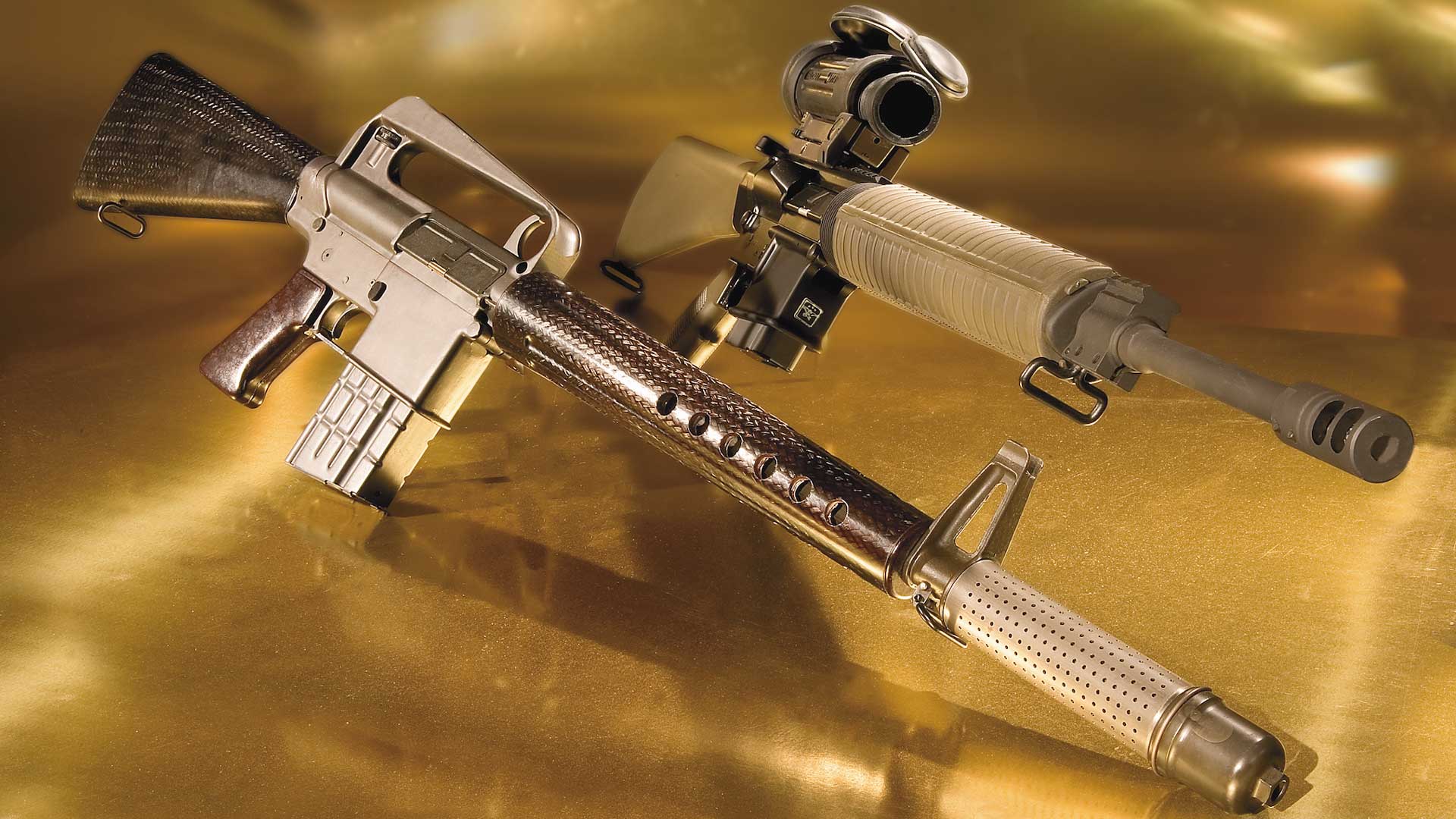
A 1950s AR-10 prototype (l.) is shown
next to a state-of-the-art AR-10A4 flat-top, this one mounted with an
Arma-ment Technology ELCAN 3.4x scope.
As envisioned by Sullivan, ArmaLite was not intended to be a
firearm manufacturer; ArmaLite’s stock-in-trade was to be ideas. The
company would use knowledge of materials and manufacturing techniques
gleaned from the aircraft industry to create radical new designs. It
would then build prototypes of those designs and market them to
manufacturers who would produce them under license. Sullivan proposed
that Fairchild purchase ArmaLite
and make it a division of the company, and in that way inject
additional capital into the venture. Boutelle agreed and, on October 1,
1954, ArmaLite became a division of Fairchild Aircraft.
A Change Of Direction

The AR-7 was a commercial, .22 LR-cal.
version of the Air Force AR-5 survival rifle. The barrel and action
could be detached and stored within the stock.
Shortly thereafter, ArmaLite was invited to submit a rifle for
consideration by the Air Force for its new survival rifle. The firearm
the company submitted, a .22 Hornet-cal. bolt-action takedown with a
four-shot magazine, was dubbed the AR-5. The gun’s barrel could be
detached from the action and stored in the plastic stock. With the
buttcap then replaced, the 2 3⁄4-lb. gun could float. The Air Force adopted the gun as the MA-1,
but never purchased it in quantity. Despite that, though, the interest
shown by the military took ArmaLite in a whole new direction. From that
moment on, the company would focus on military designs.
While testing an ArmaLite prototype at the Topanga Canyon Shooting
Range in southern California, Sullivan met a gentleman who lived in
nearby Los Angeles and made dental plates for a living. He was a former
Marine who also happened to be an amateur firearm designer. In fact, he
was testing one of his own designs that day. His name was Eugene Stoner.
Shortly thereafter, Stoner found himself in the employ of ArmaLite as
its chief design engineer.
While Sullivan had been the company’s visionary, day-to-day
operations were run by Charles Dorchester, who served in numerous
executive capacities, including president and eventually chairman of
ArmaLite. While the company conceived and developed various designs, it
was a semi-automatic rifle with an unusual locking action and unique gas
system that would make Stoner—and ArmaLite—famous. It was called the
AR-10 and was the focus of ArmaLite’s efforts from 1955 until 1959.
Tomorrow’s Rifle—Today
The AR-10 looked
radically different from anything previously seen. It had an integral
carry handle atop the receiver that contained the gun’s iron sights. The
cocking lever was on top of the receiver and articulated in the opening
of the handle. The fore-end was not wood, but fiberglass and, later,
plastic, thanks to plastics engineer Tom Tellefson. Inside, it was just
as radical with an eight-lug, rotary bolt locking not into the receiver,
but into a steel barrel extension. That allowed the receiver to be made
from lightweight, rustproof, forged aluminum rather than heavy,
rust-prone steel.
The rotary bolt and barrel extension was borrowed from the Johnson rifle designed by Melvin M. Johnson.
(Johnson was the East Coast military rifle consultant for ArmaLite and
had a contentious relationship with the military dating back to his
efforts to get the Johnson rifle adopted in place of the M1 Garand. Some
speculate that his involvement with ArmaLite didn’t help the company’s
chances with the military.) The lock-up may have been Johnson’s, but the
gas system was Stoner’s.
As described in The Black Rifle:
“[S]toner’s gas system
utilized a simple open pipe, a concept first used in the Swedish
Ljungman Gevar 42 and the later French 1944 and 1949 MAS semi-automatic
rifles. In these relatively rudimentary applications, the gas piston and
spring of a conventional gas-impingement system were replaced by the
jet of hot gas itself, which traveled back through the hollow gas tube
and impinged directly onto the face of the bolt carrier. The kernel of
genius in Stoner’s gas system was that the AR-10’s gas tube, running
along the left side of the barrel under the handguard, fed the gas
through aligned ports in the receiver and bolt carrier wall into a
chamber formed between the tail of the bolt and the surrounding bolt
carrier. This forced the bolt carrier back. After about 1/8” of
movement, the port in the carrier no longer lined up with the port in
the receiver, and the further flow of gas was cut off. The momentum
already imparted was sufficient to keep the bolt carrier moving, which
unlocked the bolt by rotating it with a connecting cam pin, thus
beginning its rearward travel. With the gas cylinder at maximum size and
the bullet long since out of the muzzle, what little pressure remained
was exhausted as a weak ‘puff’ through slots in the right side of the
bolt carrier.”
Battling The Big Boys
The gun was quickly entered into the
ongoing service rifle competition then pitting the Springfield T44
against the T48, a version of the FN FAL.
The AR-10 arrived on the scene too late and with too little development
to best the other rifles in the trials and the contract was awarded to
the T44, which was adopted by the military as the M14.
However, a handful of researchers at Aberdeen Ballistics Research Laboratories—among them American Rifleman
Ballistics Editor William C. Davis—had come up with some pretty radical
notions of their own. Despite years of insistence by Army brass on
.30-cal. rifles for combat use, some ballisticians within the military
had begun to explore the feasibility of lesser calibers. The Hall Study,
conducted by Donald L. Hall, had concluded that, given a rifle and
ammunition combination with a total weight of 15 lbs., a soldier armed
with a small-caliber rifle could kill, on average, 2.5 times as many of
the enemy as a soldier armed with an M1 rifle and ammunition.
This was followed shortly by The Hitchman Report prepared by Norman
Hitchman. It determined that most soldiers do not engage the enemy until
he has closed to 300 yds., and that hit potential was rather low until
combatants had closed to 100 yds. Therefore, the accuracy and power of
.30-cal. U.S. battle rifles—built to a 600-yd. standard—were excessive.
Practically speaking, equal results could, in theory, be achieved with
smaller, less powerful, less accurate and less costly arms. This led to
the Small Caliber, High Velocity (SCHV) concept. In addition to
maintaining practical effectiveness, a small cartridge would recoil
less, be more controllable in fully automatic fire (a distinct problem
encountered with the .308 Win.-cal. M14),
could be carried in greater quantity by individual soldiers and would
allow a lighter, handier rifle than a .30-cal. cartridge. ArmaLite was
consequently asked to explore reducing the AR-10 to .22-caliber. The
company agreed, though it continued to seek sales of its .30 cal.
domestically and abroad.

Firearm designer Eugene Stoner poses
beside various incarnations of the AR system. His greatest strength may
have been his ability to take clever, yet disparate design elements and
integrate them into a single, functional firearm. The AR-15/ M16 that
evolved from his design has been with us for about 40 years now.
When the military requested that ArmaLite investigate downsizing the
AR-10 to accommodate a .22-cal. cartridge, it’s doubtful the company
realized how significant the request was to prove. Modifying the .222
Rem. cartridge and freely building on the work done at Aberdeen,
Stoner—no ballistician—created the round that eventually became known as
the .223 Rem. (5.56 mm NATO). Meanwhile, Arma-Lite designers Robert
Fremont and L. James Sullivan downsized the AR-10, not an easy task
since it wasn’t a matter of a consistent ratio of reduction from the
large gun to the small one.
Once completed, the new gun—referred to as the AR-15—was largely
ignored by the military bureaucracy that had initiated its development.
Factions within the military were still uncomfortable with SCHV, while
some felt the military was too far along in its commitment to the new
M14 service rifle to change at that point.
From Bad To Worse
In the meantime, things
were going badly with the AR-10. It is important to remember that
Armalite was conceived of as a design shop rather than a manufacturing
entity. The company contracted with Artillerie-Inrichtingen, the Dutch
arsenal, to build the rifle, hoping for sales to foreign militaries.
However, the company had never had the funds to properly develop the gun
completely. There were numerous bugs that had to be worked out of the
design, bugs a larger company might have anticipated and dealt with
easily. Moreover, manufacturing obstacles continually delayed
production, frustrating ArmaLite executives. Further, with the exception
of a contract with Sudan—which no one has ever mistaken for a world
power—the rifles weren’t selling, even to the Dutch whose arsenal was
building them.

AR-180B (.223 Rem.)
Finally, with no future AR-10 sales on the horizon, the
military’s interest in the SCHV concept apparently waning and Fairchild
strapped for cash, ArmaLite chose to cut its losses and, in early 1959,
licensed the rights to both the AR-10 and AR-15 designs to Colt’s
Manufacturing for $75,000 and a 4.5 percent royalty.
Although it is widely regarded as a milestone in the history of bad
ideas, the licensing agreement with Colt’s was not irrational given what
was known at the time. Colt’s—itself near bankruptcy—was taking a
gamble. Fortunately, that company’s luck was much better than
ArmaLite’s. Its luck came in two forms: rising tensions in Vietnam, and
the person of Robert W. “Bobby” MacDonald.
New Shooter
When the U.S. decided to
intervene in Southeast Asia, it helped set the stage for the ultimate
triumph of the AR-15. The election of John F. Kennedy and the
appointment of Robert S. McNamara as Secretary of Defense meant that
change had come to arms procurement. With McNamara’s “Whiz Kids” steeped
in no tradition save arrogance, the traditional channels of trial,
development and adoption could be breached. That is just what happened
when Colt representatives took the AR-15 to Indochina.
The American government had decided that, despite the focus on
strategic nuclear weapons, small arms for fighting limited wars against
insurgents were needed and had been neglected. Developing and securing
such weapons was to be the mandate of the Advanced Research Projects
Agency (ARPA). These weapons were not to be carried by U.S. personnel,
per se, but were to arm U.S.-backed foreign nationals. It was the result
of such a program, specifically Project AGILE, that brought Colt’s
representatives, including MacDonald and now Stoner, to the Far East to
demonstrate the AR-10 and AR-15. The smaller arm was a tremendous hit
with the diminutive foreign troops. The gun and its shooting
characteristics appealed to those of smaller stature far more than did
the AR-10 or any other .30-cal. battle rifle. Moreover, the AR-15 had
virtually no competition from like-chambered combat rifles—there were
none. MacDonald promptly informed Colt’s to focus on the AR-15 rather than the AR-10 and to gear up for the Asian market.

ArmaLite AR-10A4 (.308 Win.)
Stateside, MacDonald was no less effective. At Boutelle’s
birthday party in Maryland, MacDonald handed Air Force General Curtis
LeMay an AR-15 and let him shoot a couple of watermelons with
devastating effect. The result was two exploded melons and LeMay’s quick
request that AR-15s be purchased to replace M1 Carbines for Air Force personnel responsible for the security of Strategic Air Command bases.
In Vietnam, the role of the “black gun” continued to expand. Although
it was supposed to be issued only to foreign troops, U.S. personnel
gradually began carrying the new rifle, too. Obviously, this made
logistic sense since they were traveling with AR-15-equipped ARVN
soldiers. But also, American personnel noted that the light,
fast-handling gun was better suited to jungle warfare than any other
battle rifle-caliber longarm available. At first it was issued only to
specialized personnel, but soon became a general-issue arm. ArmaLite
could only watch in bitter astonishment as the AR-15 became the
standard-issue U.S. service rifle, supplanting the bulky M14.
There were, of course, problems with the AR-15 (which was
subsequently given the military designation M16). Many of those problems
were directly attributable to how the arm was adopted—without adequate
testing of the gun nor training for the soldiers. However, with the
wherewithal that comes from having enormous government contracts,
Colt’s, with Stoner as a consultant, was eventually able correct serious
problems, especially the extraction and jamming issues that plagued the
early guns and were only discovered after the rifles were widely
issued.
After having reduced the AR-10 to produce the AR-15, ArmaLite
reversed course and took what had been learned from the AR-15 and scaled
it up to create a new, improved AR-10 called the AR-10A.
The future, however, was clearly with the .223-Rem.-chambered rifle,
and it appeared that the age of the AR-10 would never come.

ArmaLite M15A2 National Match (.223 Rem.)
The Dream Winds Down
Boutelle was
eventually relieved of his position with Fairchild. George Sullivan, the
ArmaLite muse, landed more softly: He had never left his position with
Lockheed.
Recognizing that the .223 Rem. was the hot ticket, ArmaLite was faced with the problem that the AR-15 patents now belonged to Colt’s.
The company then created a “poor man’s .223” called the AR-18. It was
to be a low-cost .223 rifle made from stampings rather than forgings and
having a different gas system than the AR-15. It would allow
less-wealthy countries to equip their militaries with a .223 Rem.-cal.
rifle.
However, despite two decades of effort, the company’s luck ran true
to form and sales of the AR-18 were very limited. In the end, ArmaLite
was sold to Elisco Tool Manufacturing Company, a Philippine concern
whose U.S. component folded with the overthrow of Philippine president
Ferdinand Marcos.
Restoring The Dream
In January of 1994,
Mark Westrom, a former Army Ordnance officer and civilian employee of
the Weapons Systems Management Directorate of the Army’s Armament
Materiel and Chemical Command (AMCCOM) purchased Eagle Arms, a small
company that made AR-15-type rifles and parts following the expiration
of Stoner’s patents. A business associate of Eagle Arms, Dr. John
Williams, had worked for ArmaLite in his youth and introduced Westrom to
former ArmaLite Production Manager John McGerty who, in turn,
introduced Westrom to John Ugarte. Ugarte had been the last president of
record at ArmaLite and had retained the rights to the trademark;
Westrom promptly purchased those rights. Thus was the ArmaLite marque
reborn.








































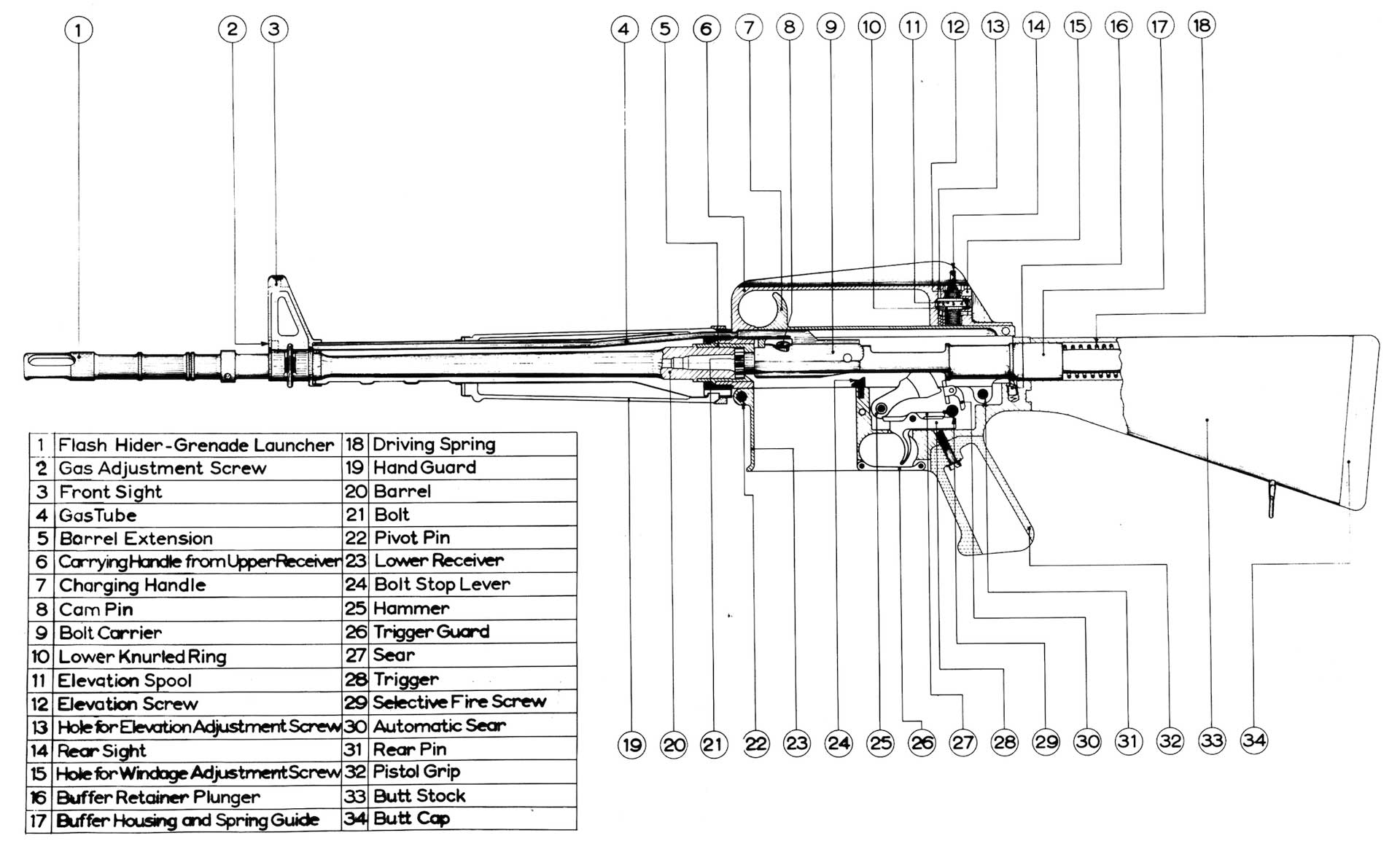
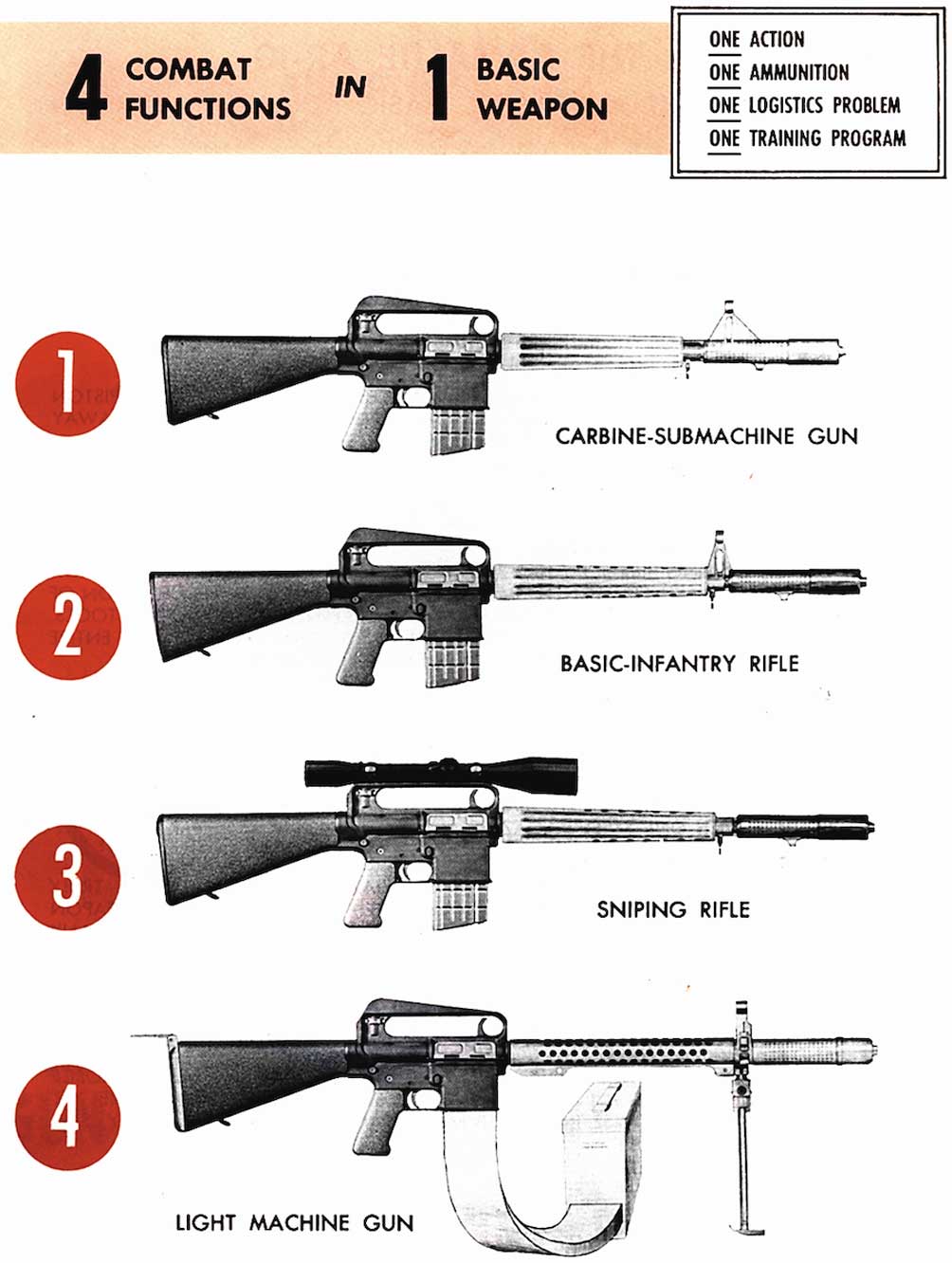




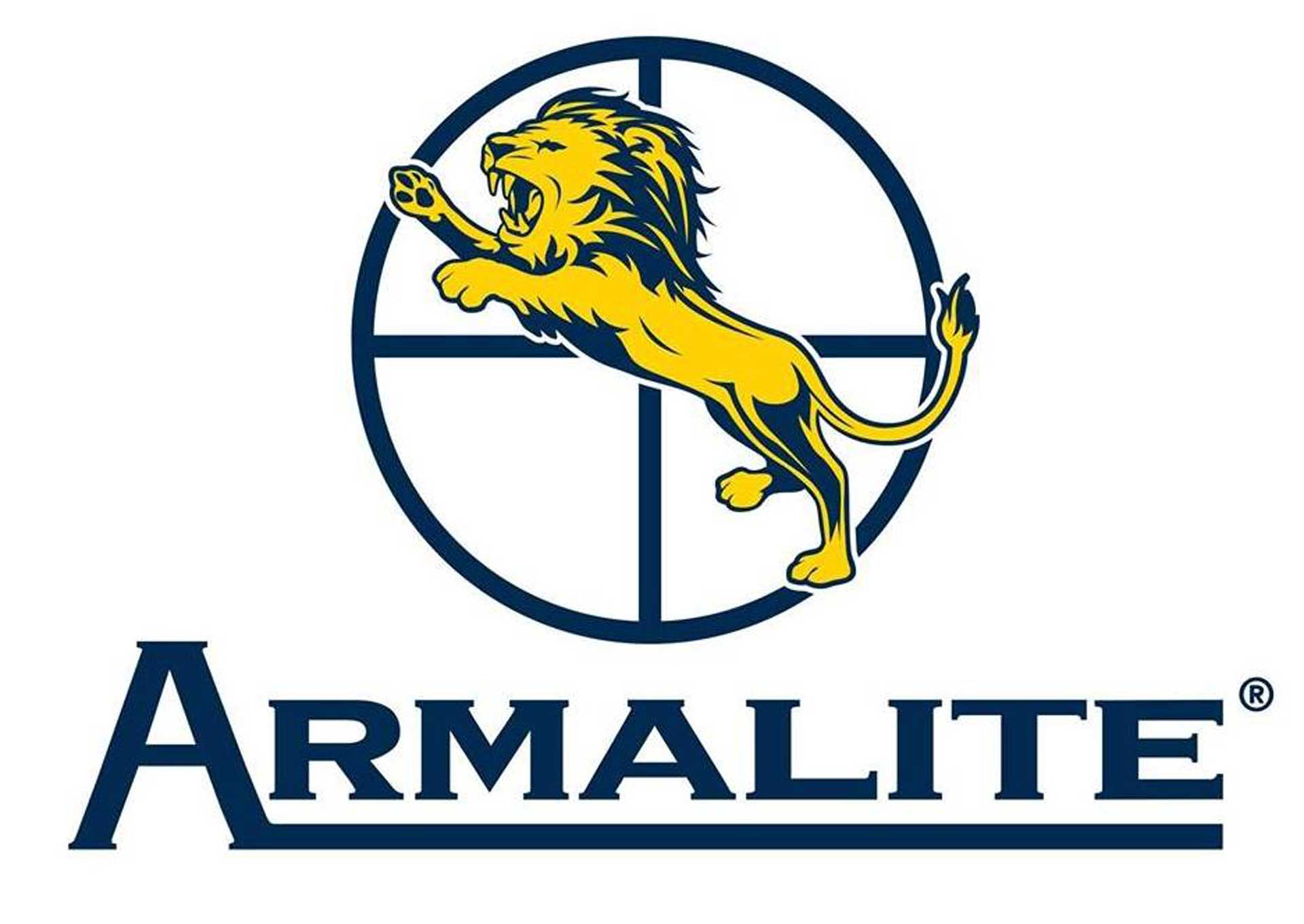

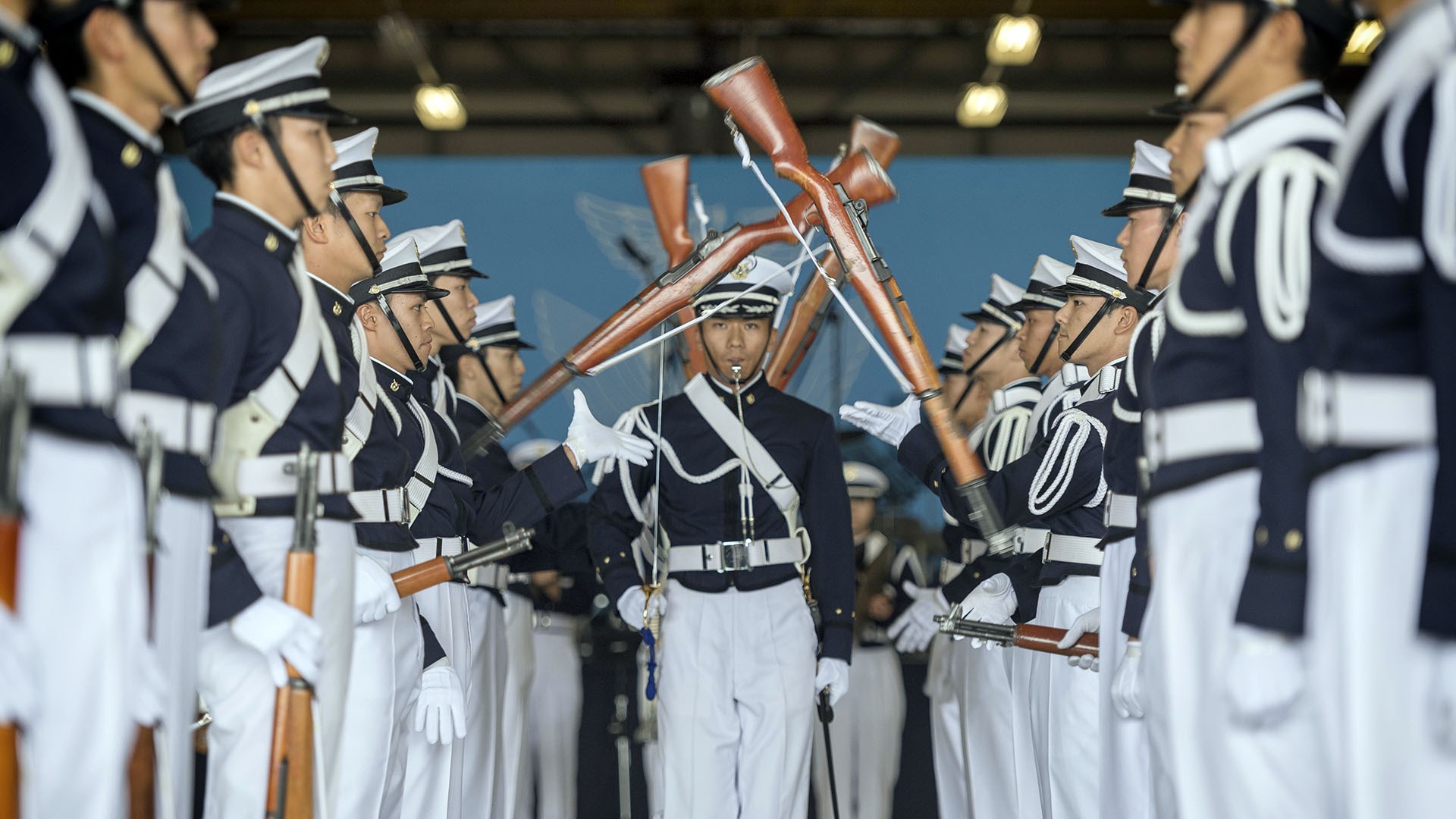 Japan
Air Self-Defense Force Honor Guard members participate in a drill
performance during the 2017 Friendship Festival, Sept. 17, 2017, at
Yokota Air Base, Japan. (U.S. Air Force photo / Airman 1st Class Juan
Torres - 170917-F-KG439-0111).
Japan
Air Self-Defense Force Honor Guard members participate in a drill
performance during the 2017 Friendship Festival, Sept. 17, 2017, at
Yokota Air Base, Japan. (U.S. Air Force photo / Airman 1st Class Juan
Torres - 170917-F-KG439-0111).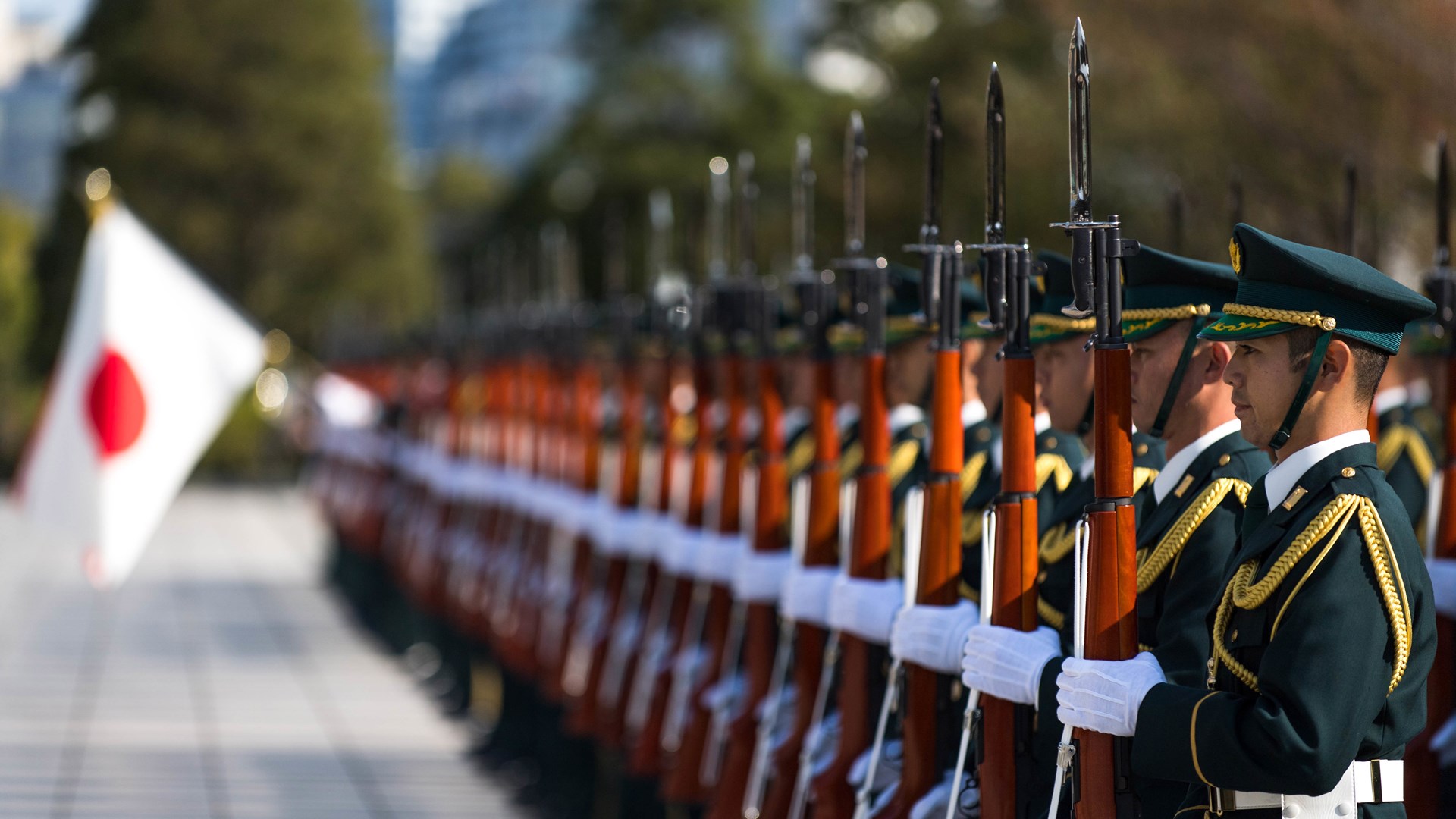 Members
of the Japanese Ground Self-Defense Force Special Honor Guard stand in
formation at the Ministry of Defense in Tokyo on Nov. 7, 2016. The JGSDF
held a welcoming ceremony for U.S. Air Force Chief of Staff Gen. David
L. Goldfein as part of his first visit to the region as Air Force chief
of staff. (U.S. Air Force photo by Staff Sgt. Michael Smith).
Members
of the Japanese Ground Self-Defense Force Special Honor Guard stand in
formation at the Ministry of Defense in Tokyo on Nov. 7, 2016. The JGSDF
held a welcoming ceremony for U.S. Air Force Chief of Staff Gen. David
L. Goldfein as part of his first visit to the region as Air Force chief
of staff. (U.S. Air Force photo by Staff Sgt. Michael Smith).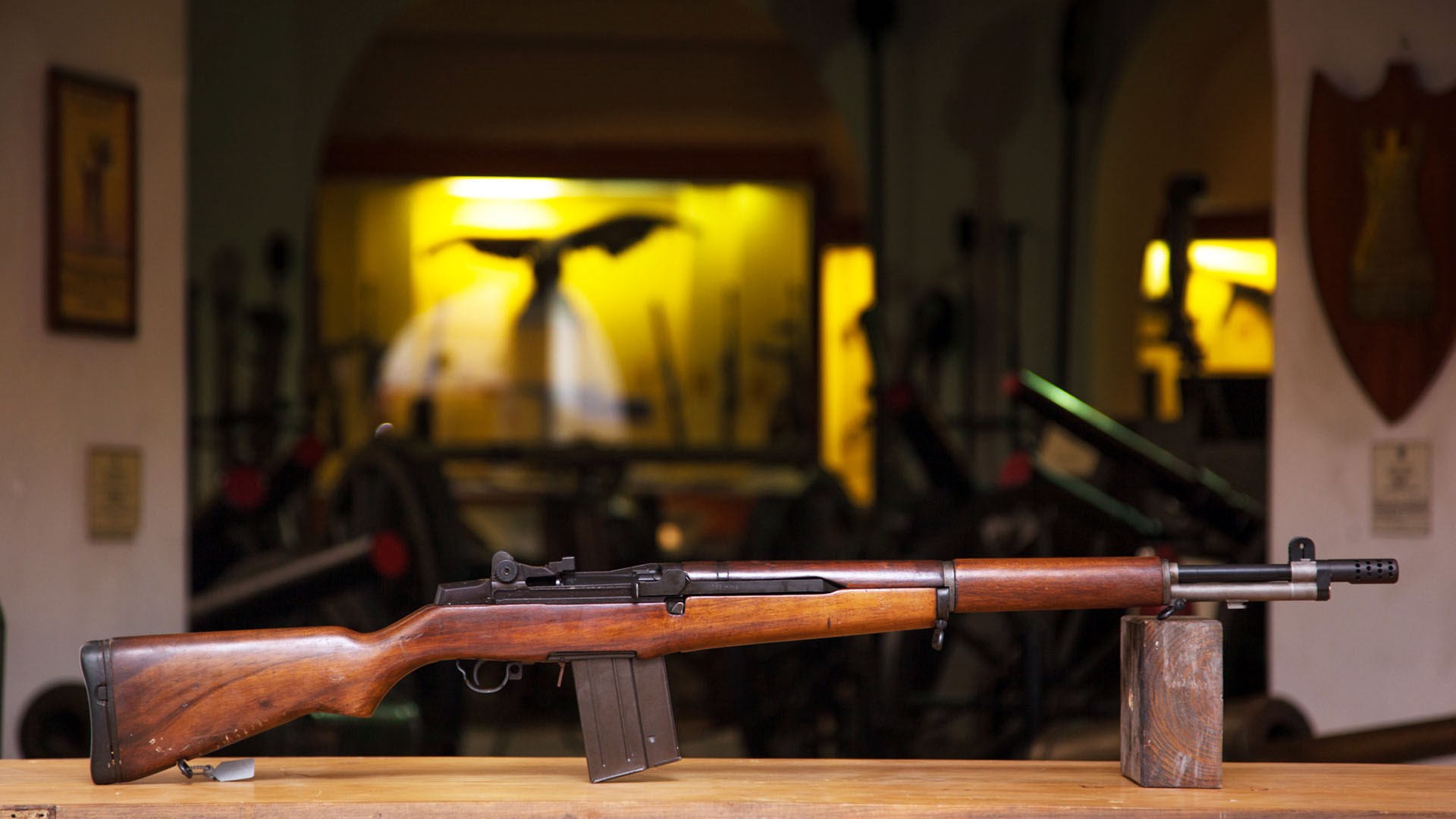 Right side view of Beretta BM59E rifle SN #5347812 (formerly Springfield M1 rifle SN #5347812).
Right side view of Beretta BM59E rifle SN #5347812 (formerly Springfield M1 rifle SN #5347812).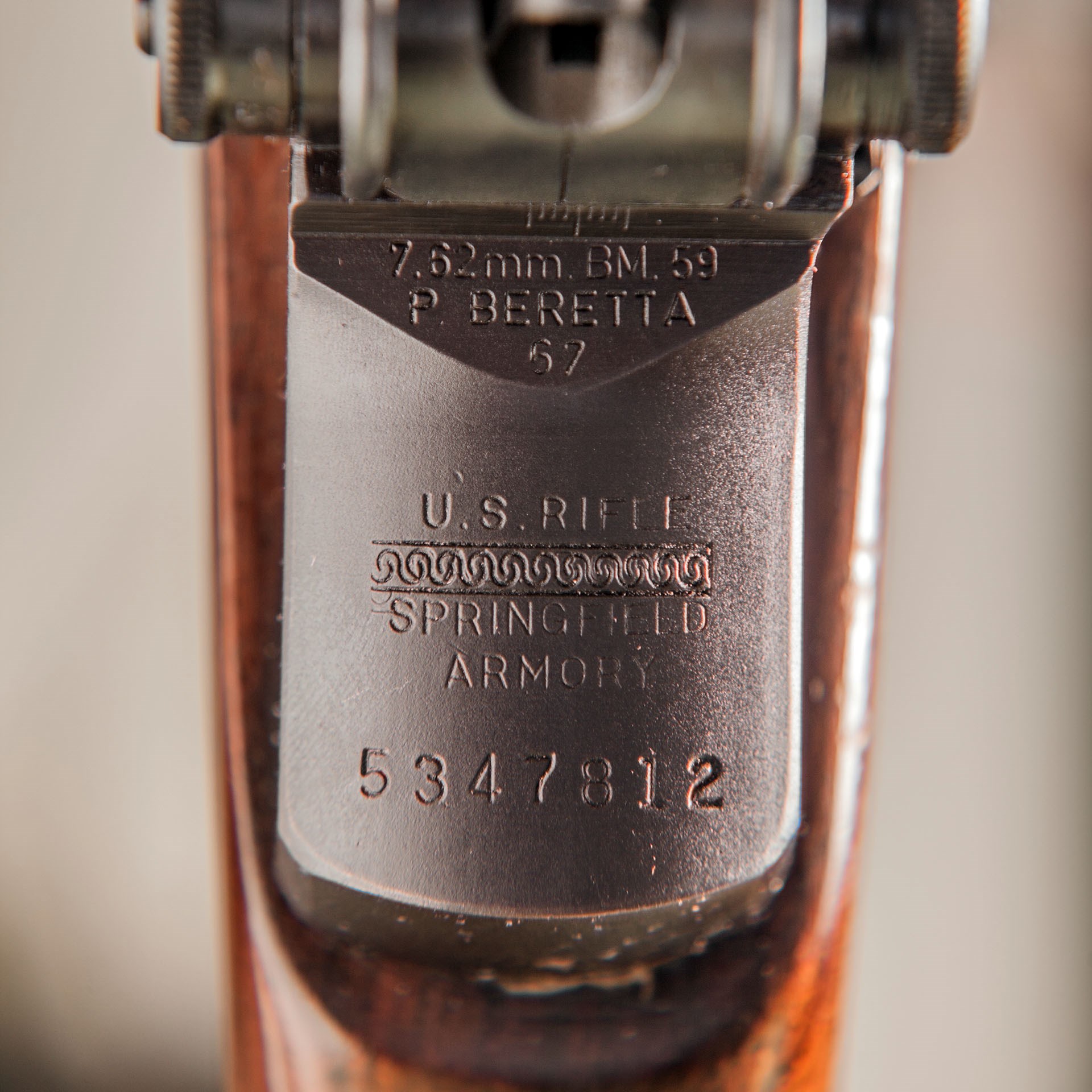
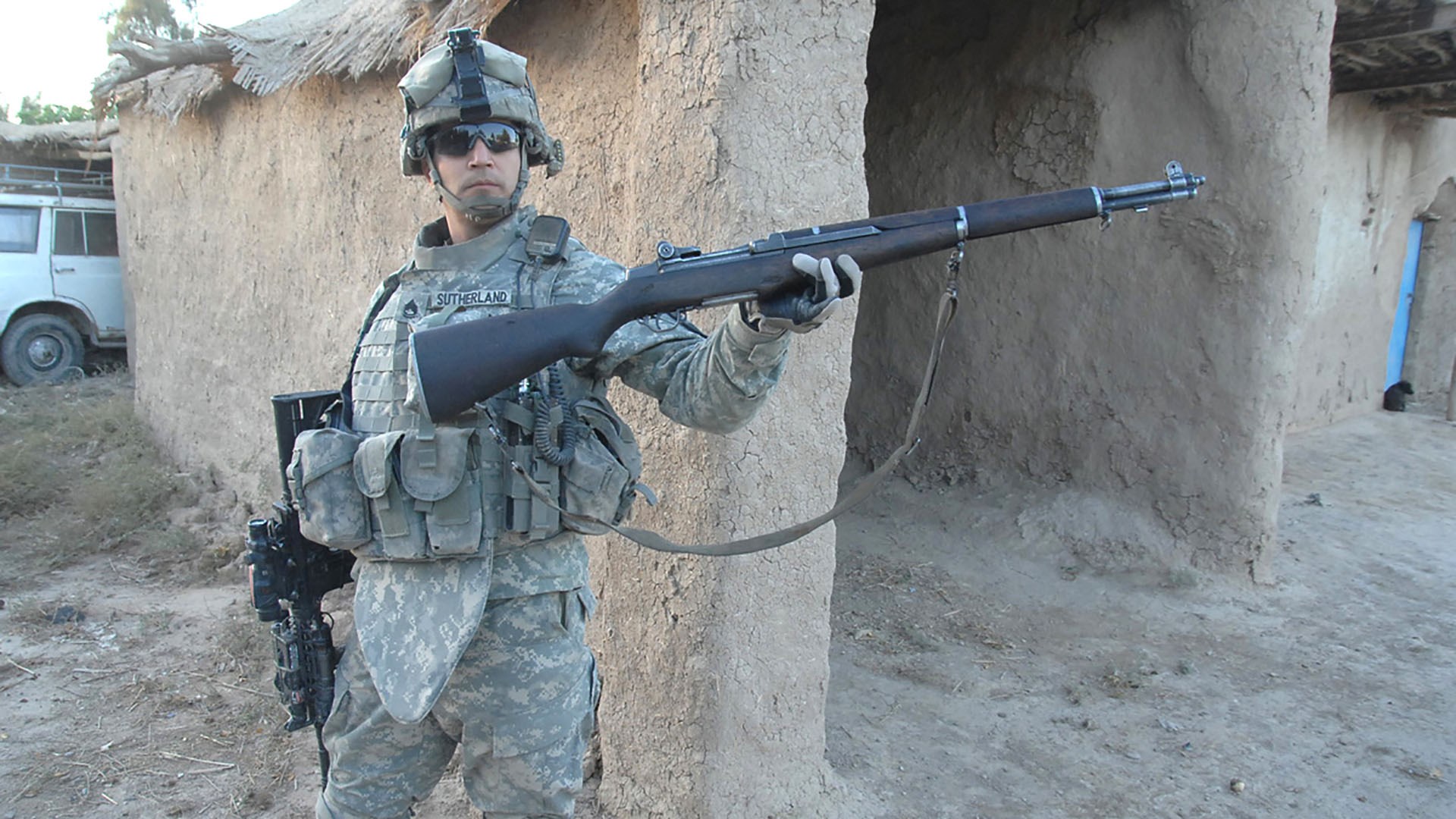 A
U.S. Army Soldier displays an M1 rifle discovered in a suspected
insurgent's home in Western Muqdadiyah, Iraq, Dec. 12, 2007. The Soldier
is from Alpha Company, 2nd Battalion, 23rd Infantry Regiment, 3rd
Brigade Combat Team, 2nd Infantry Division. (U.S. Army photo by SPC
Shawn M. Cassatt).
A
U.S. Army Soldier displays an M1 rifle discovered in a suspected
insurgent's home in Western Muqdadiyah, Iraq, Dec. 12, 2007. The Soldier
is from Alpha Company, 2nd Battalion, 23rd Infantry Regiment, 3rd
Brigade Combat Team, 2nd Infantry Division. (U.S. Army photo by SPC
Shawn M. Cassatt).